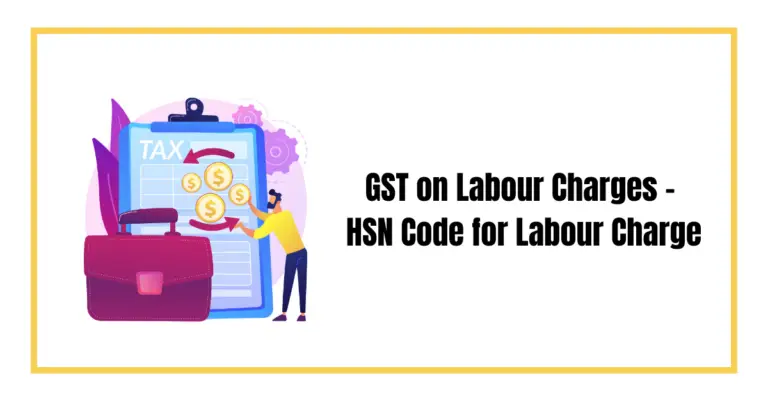Read this blog to understand what is GST return filing and how to file it in a hassle-free way in India
On your GSTR Filing, you must list all the money you make from conducting commercial transactions. Depending on the nature of the company, all GST-registered enterprises must submit GST returns monthly, quarterly, or yearly. lets check What is GST Return Filing
What is the GSTR Filing?
The GST return filing is a record that includes all your purchases, tax collected on sales (output tax), sales, and tax paid on purchases (input tax). You’ll have to pay the GST you owe after you’ve filed your taxes (money that you owe the government).
Who Really Should File Gst Returns in India?
As a result of the implementation of the GST, firms with annual aggregate revenue of more than Rs.5 crore must submit two monthly returns and one yearly return. This equates to a total of 25 dividends every year.
QRMP is an option for taxpayers having a taxable income of up to Rs.5 crore. QRMP payers must submit nine GSTR returns annually, including four GSTR-1s, three GSTR-3Bs, and one annual return. Even though QRMP registrants submit quarterly returns, they must pay monthly taxes.
Composition dealers, for example, are required to submit five GSTRs each year in addition to their regular GSTRs (4 statement-cum-challans in CMP-08 and one annual return GSTR-4).
Types of GSTR Filing
The following is a list of the many types of GST returns that may be filed.
Typically Businesses and Organization
-
GSTR1
Return of taxable income for outgoing supplies (contains the details of the interstate as well as intrastate B2B and B2C sales, including purchases under reverse charge and inter-state stock transfers made during the tax period).
If Form GSTR-1 is submitted beyond the due date, the late fee will be collected in the following open return in Form GSTR-3B and automatically filled in. Taxpayers will no longer be able to submit Form GSTR-1 beginning on January 1, 2022, if they have not already done gstr 3 filing.
-
GSTR3B
The Government of India has created a temporary consolidated summary return of inbound and outbound supply as a relief for enterprises that have just switched to GST. Tax payments will be based on a basic GSTR-3B form for July and August 2017.
-
GSTR9
The taxpayer’s annual consolidated tax return includes income and expense information for the whole year. The taxpayer’s monthly tax returns then sort these).
-
GSTR 9C
Taxpayers with yearly revenue of more than Rs. 2 crores in a financial year must submit an audit form to the government.
Businesses Signed Up for the Composition Initiatives in India
-
GSTR4
Compounding sellers are required to report their earnings every three months. This includes the entire value of supplies produced during the time covered by the return, details of tax paid at the compounding rate (not more than 1 per cent of total turnover), and invoice-wise data for inbound supplies, whether imported or acquired from regular taxpayers.
-
GSTR 9A
Every taxpayer participating in the composition program must submit an annual composition gst return form.
Other Types of Business Owners and Dealers
-
GSTR5
GSTR 5a return – All products and services sold and acquired by the taxpayer on Indian soil (including imports) within the registered period/month are included in return for non-resident foreign taxpayers.
-
GSTR6
Invoice details, including the GSTIN of the taxpayer receiving the credit, and a separate ISD ledger containing the period’s opening ITC balance, credit for ITC services received, debit for ITC reversed or distributed, and a closing balance all included in this return. It also contains the taxpayer’s basic information (name, GSTIN, etc.).
-
GSTR7
Invoices against which tax has been deducted (categorized under the primary tax headings – SGST, CGST, and IGST), as well as details of any extra payments, such as interest and penalties, are all included in this monthly report for TDS transactions.
-
GSTR8
Ecommerce operators’ monthly profit Details of supplies made to customers by both registered taxable persons and unregistered persons (whether or not they are registered taxpayers), customers’ basic information (whether or not they are registered taxpayers), the amount of tax collected at source, tax payable and tax paid are included in the return.
-
GSTR10
Termination of business activities/cancellation of GST registration requires filing a final GST return before the registration is cancelled. Details of all supplies, obligations, taxes, etc. (collected and owed) will be included.
Automatically Drafted GSTR Filing
-
GSTR 2A
The GSTN automatically compiles a tax return for purchases and inward supplies made by a taxpayer based on the GSTR-1 data of their suppliers.
-
GSTR 2B
Taxpayers’Input Tax Credit(ITC) statements are included in GSTR 2B, an automatically generated form. GSTR 2B, according to the GST Council, will reduce the time it takes to submit returns, minimize mistakes, facilitate reconciliation, and make compliance more straightforward.
-
GTR 4A
Composition dealers must file a purchase-related tax return every three months. The GSTN site automatically generates it based on the GSTR-1, GSTR-5, and GSTR-7 data provided by your suppliers.
How Can I Use GSTN to Submit My Tax Return Online
The Goods and Service Tax Network will keep track of all suppliers and purchasers who have registered for GST, integrate the information provided, and save records for future use. Financial reporting requires companies to submit three monthly and one annual return every financial year (37 returns).
For companies, the GSTN has released a simple Excel-based template that simplifies the process of submitting their taxes. The GST common site provides a free download of this Excel worksheet. This template may be used by taxpayers to track invoice data regularly.
On or before the due date, the GST site may be updated with the data of incoming and outgoing supply. Offline preparation of the data is an option. The taxpayer will need access to the Internet just during the process of submitting the prepared file to the GST site.
Late Fee for Delay in Filing Service Tax Return
Interest and a late charge will be imposed if your GST returns are not submitted on time. The annual interest rate is 18 per cent. This needs to be computed by the taxpayer based on the amount of unpaid taxes. The filing deadline is the next business day, and the payment deadline is the day after.
Each day an Act is overdue, the late cost is Rs.100. Thus, it will cost Rs.100 under the CGST and Rs.100 under the GST tax. There will be a maximum daily charge of Rs.200, which will be applied to a total of Rs.5,000. Attention: The maximum late charge has been amended for the month/quarter ending June 2021.
- Taxpayers whose total amount of central tax payable is Nil- Rs 250
- Taxpayers with an annual aggregate turnover up to Rs.1.5 crore in the previous financial year- Rs 1000
- Taxpayers with an annual aggregate turnover exceeding Rs.1.5 crore and up to Rs.5 crore in the previous financial year- Rs 2500
Conclusion
Introducing a comprehensive income tax system in India, such as the Goods and Services Tax (GST): https://www.gst.gov.in/, would ensure that services for taxpayers, including registration, returns, and compliance, are open and easy to understand.
To complete their Goods and Services Tax (GST) returns, individual taxpayers will be required to use four forms: the return for supply, the return for purchases, the monthly, and the annual return. Small taxpayers chosen to participate in a composition scheme will be required to submit quarterly returns. Every return will have to be submitted using the online system.










